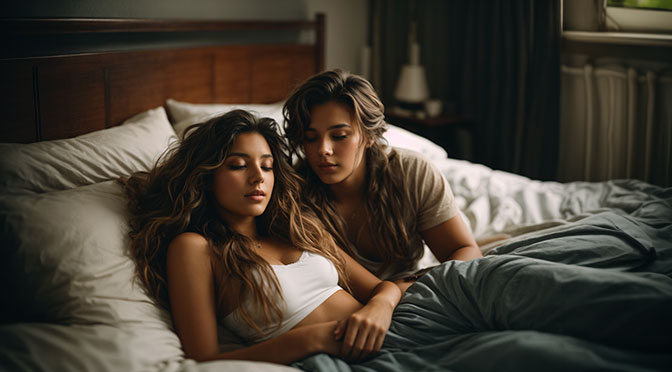As an erotica writer, you’re always looking for ways to add depth and sensuality to your scenes. One great way to do this is to incorporate a character’s hair. Whether woven into the narrative as a physical sensation or used as a metaphor for desire, hair can effectively create intimate moments. So how can you use it effectively? In this post, we’ll introduce you to some tips and tricks for writing about hair in sensual scenes.
Use sensual language
When writing about hair in a sensual scene, it’s essential to focus on the language of the senses. Describe the texture, color, and smell of the hair. Is it soft, silky, matted, wild, or something in between? Does it smell like coconut or lavender? Use language that appeals to the reader’s senses and draws them deeper into the scene. For example:
“Her hair was a cascade of golden silk, shimmering in the moonlight. He couldn’t resist running his fingers through it, enjoying the softness and warmth that emanated from it.”
Explore metaphors
Hair can serve as an effective metaphor for desire and sensuality. Consider how hair can evoke certain feelings or emotions. Is hair a symbol of wildness of character, or is it something your partner would like to run his or her fingers through? For example:
“Her red hair meandered down her back like a river of fire. He couldn’t resist the temptation to plunge his hands into its depths and lose himself in its feel.”
Play with contrasts
Contrasts in hair descriptions can help make characters more vivid and exciting. Here are some ways you can use contrast in hair description as an author:
Color contrast:
Describe a character’s hair color, emphasizing the contrast between their natural hair color and other aspects of color, such as highlights, streaks, or dyed areas. For example, “Her jet black hair stood out starkly against the fiery red strands that fell wildly around her face.”
Texture contrast:
Contrast the texture of the hair by comparing straight, silky hair to frizzy or wavy hair. Example: “His straight, shiny hair was in stark contrast to her wild, wavy locks.”
Length contrast:
Emphasize the contrast in hair length between different characters. This can help illustrate personalities and lifestyles. For example, “Her short, sassy hair was the exact opposite of his long, flowing mane.”
Condition contrast:
Describe the condition of the hair by comparing healthy, shiny hair to dry, brittle, or unkempt hair. Example: “Her hair was silky and shiny, while his was in a sad state of neglect.”
Style and hairstyle contrast:
Emphasize contrast in the characters’ hairstyles or hairstyles. This can illustrate their personality or social status. For example, “His tightly combed-back hairstyle looked stern and disciplined in contrast to her wild, tousled look.”
Contrast with accessories:
Add accessories that contrast with the hair. This can be jewelry, hair bands, hats or other elements. For example, “In her sun-bleached hair, she wore a bold red hat that contrasted strikingly.”
Emotional contrasts:
Use hair description to reflect emotions or internal conflicts of characters. For example, “Although her brown hair looked calm and smooth, the nervous grip with which she twirled it betrayed her inner turmoil.”
By using contrasts in your hair description, you can make your characters’ physical appearance more vivid and give subtle insights into their personalities, lifestyles, and emotions. Remember to use contrasts to fit the overall story and character development.
Consider cultural meanings
Different cultures have different meanings for hair. Consider how you can incorporate cultural meanings into your descriptions of hair, especially if there is a subtext to it. For example, in some cultures, long hair is considered a symbol of femininity and beauty. In others, short hair is considered a symbol of rebellion or strength. Be mindful of any cultural associations and try to use them respectfully and nuancedly.
Don’t just think about the hair itself.
When incorporating hair into sensual scenes, remember that it’s not just about the hair itself but also the character. Use hair as a means of character development and deepening emotional connections. For example, describe how a character’s hair reflects their mood or emotions or how the hair changes throughout the scene as the characters become more intimate.
When you describe hair in your text, you have an effective means of creating sensual and intimate scenes. Hair can add depth and complexity to your narratives, whether you use sensual language, metaphors, or cultural associations. By paying attention to the meaning of hair and using it to enhance your characters and the scene, you can create compelling and memorable scenes that will keep your readers coming back for more.


